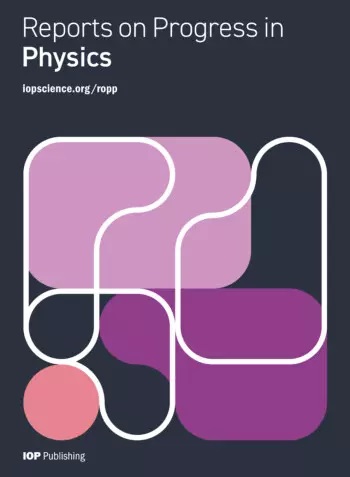Spin-momentum locking in locally noncentrosymmetric quantum materials.
IF 20.7
1区 物理与天体物理
Q1 PHYSICS, MULTIDISCIPLINARY
引用次数: 0
Abstract
Abstract The primary focus of spintronics is the investigation of novel spin splitting effects and related spin-polarized quantum materials, which have been extensively pursued for their potential applications. The structural inversion asymmetric Rashba splitting, bulk inversion asymmetric Dresselhaus splitting, and ferromagnetic spin polarization derived from Zeeman splitting constitute the foundation of traditional spintronics. From a symmetry perspective, ferromagnets achieve spin splitting through the breaking of time-reversal symmetry. However, in time-reversal symmetric and inversion symmetric materials with spin-orbit coupling, unexpected forms of spin-splitting can also arise by breaking local inversion symmetry, known as hidden spin-momentum locking, bringing infinite vitality to fundamental research and future applications. This review first highlights notable advancements in spin-splitting within centrosymmetric systems, then examines the influence of hidden spin-momentum locking on superconducting and topological behaviors, concluding with a discussion on prospective opportunities in this emerging field. Given the rapid progress in non-relativistic spin splittings-particularly within altermagnetism-we develop appropriately scaled extensions to advance this emerging field. This review seeks to enhance our understanding of the "hidden effect" in fundamental research while uncovering additional quantum phenomena that emerge from introducing extra degrees of freedom-an aspect that underscores the unique appeal of quantum materials capable of continuously demonstrating novel effects. .局部非中心对称量子材料中的自旋动量锁定。
摘要自旋电子学的主要焦点是研究新的自旋分裂效应和相关的自旋极化量子材料,这些材料因其潜在的应用而受到广泛的关注。结构反演非对称Rashba分裂、体反演非对称Dresselhaus分裂以及由Zeeman分裂衍生的铁磁自旋极化构成了传统自旋电子学的基础。从对称性的角度来看,铁磁体是通过时间反转对称性的破坏来实现自旋分裂的。然而,在具有自旋-轨道耦合的时间反转对称和反演对称材料中,也可以通过打破局部反演对称而产生意想不到的自旋分裂形式,即隐性自旋动量锁定,为基础研究和未来应用带来无限活力。这篇综述首先强调了在中心对称系统中自旋分裂的显著进展,然后研究了隐藏自旋动量锁定对超导和拓扑行为的影响,最后讨论了这一新兴领域的潜在机会。鉴于非相对论性自旋分裂的快速发展,特别是在交替磁场中,我们开发了适当的扩展来推进这一新兴领域。这篇综述旨在加强我们对基础研究中“隐藏效应”的理解,同时揭示引入额外自由度所产生的额外量子现象——这一方面强调了量子材料能够不断展示新效应的独特吸引力。
本文章由计算机程序翻译,如有差异,请以英文原文为准。
求助全文
约1分钟内获得全文
求助全文
来源期刊

Reports on Progress in Physics
物理-物理:综合
CiteScore
31.90
自引率
0.00%
发文量
45
审稿时长
6-12 weeks
期刊介绍:
Reports on Progress in Physics is a highly selective journal with a mission to publish ground-breaking new research and authoritative invited reviews of the highest quality and significance across all areas of physics and related areas. Articles must be essential reading for specialists, and likely to be of broader multidisciplinary interest with the expectation for long-term scientific impact and influence on the current state and/or future direction of a field.
 求助内容:
求助内容: 应助结果提醒方式:
应助结果提醒方式:


